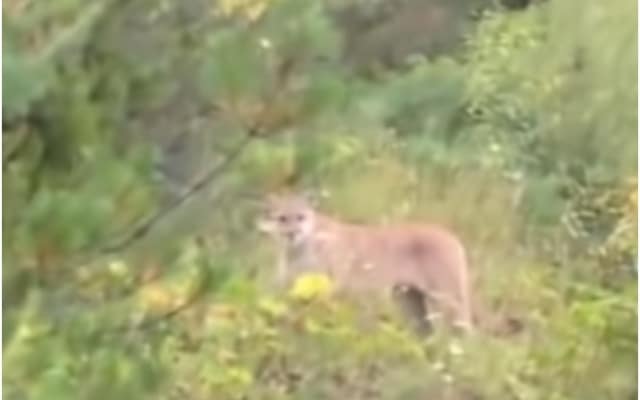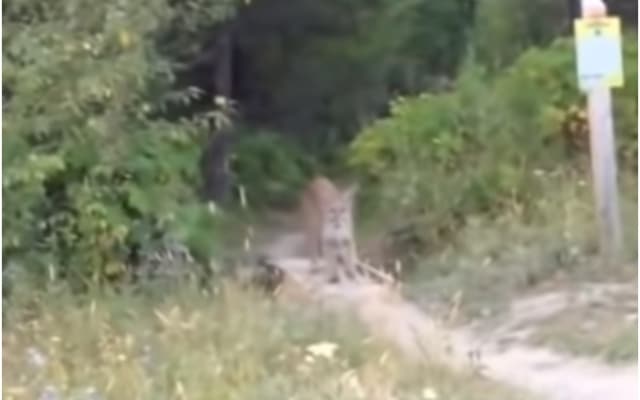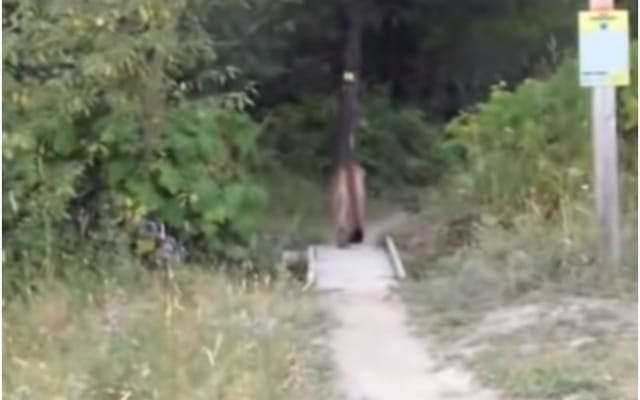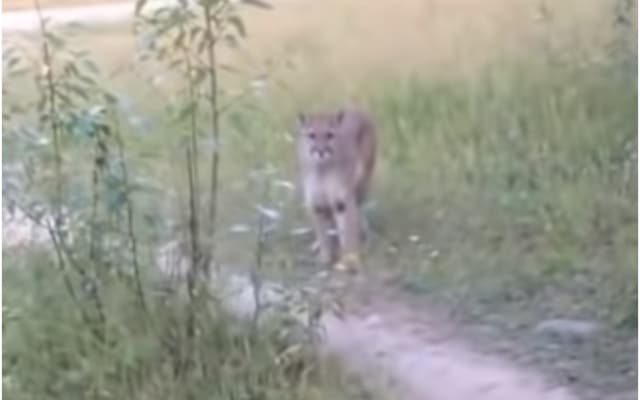Chris, a passionate mountain biker, embarked on an exciting biking adventure in Fernie, British Columbia, eager to explore the challenging terrain and soak in the peaceful scenery. But what started as a thrilling ride quickly turned into a nerve-wracking face-off with a mountain lion.

While cycling on a secluded trail, Chris spotted the elusive predator watching him closely, a sight that would send shivers down anyone’s spine. Thinking quickly, Chris grabbed his camera to document the unexpected and tense moment. As he continued his ride, the mountain lion’s curiosity turned into a more threatening interest. It began approaching him, making the situation both fascinating and terrifying.

Chris knew he had to stay as calm as possible, despite the rising fear within him. He remained silent at first, hoping not to provoke the animal, but he was ready for anything. Describing the experience as “really freaky,” Chris captured the raw emotion of being face-to-face with such a powerful creature. He understood that running would only trigger the mountain lion’s predatory instincts. Instead, he backed away slowly, moving carefully and deliberately.

Maintaining composure was crucial, as any sign of panic could worsen the situation. Chris knew he had to show dominance, so he stood his ground, making himself look bigger and more intimidating. This careful approach was his best chance of scaring off the animal.
To calm himself and assert his presence, Chris started talking to the mountain lion. His voice served two purposes: it projected confidence and might dissuade the animal from coming closer. However, the mountain lion wasn’t easily scared. It continued to approach, weaving in and out of the trees, testing Chris’s resolve. This interaction underscored the unpredictability of wildlife encounters.
Chris knew he had to do more than just talk. In a bold move, he began growling back at the predator. This act of mimicking the mountain lion’s sounds was a strategy to communicate dominance and try to intimidate it. The mountain lion, sensing Chris’s determination, continued its cautious advance but was clearly reassessing the situation. This created a tense standoff between man and beast.

The tension grew as the mountain lion approached from different directions, trying to outmaneuver Chris. He had to stay alert and think quickly. Chris shouted at the mountain lion to stay back, his voice firm and commanding. The combination of loud noises and assertive behavior was crucial in convincing the animal that Chris was not prey. Every move was a calculated effort to maintain control over the encounter.
Finally, after what felt like an eternity, the mountain lion began to retreat. Chris’s persistent and composed reactions had paid off. The predator slinked back into the forest, leaving Chris shaken but unharmed. He knew that his knowledge and actions had successfully prevented a potential attack, a testament to his preparedness and presence of mind. The relief was overwhelming after such an intense confrontation.

Chris’s encounter with the mountain lion highlights the importance of knowing how to handle such situations in the wild. Encounters with predators can be extremely dangerous, but understanding how to respond can make all the difference. Chris’s experience emphasizes the need for awareness and education about wildlife behavior and safety protocols. His quick thinking and calm demeanor were key factors in ensuring his safety.
For outdoor enthusiasts and adventurers, Chris’s story serves as a powerful reminder of the unpredictable nature of wildlife encounters. Knowing how to assert dominance, remain calm, and use vocalizations effectively can deter a predator and prevent an attack. Chris’s experience in Fernie is not just a thrilling story but also a valuable lesson in the importance of being prepared and staying composed in the face of danger. This encounter will be a memorable tale for him and a cautionary story for others.

